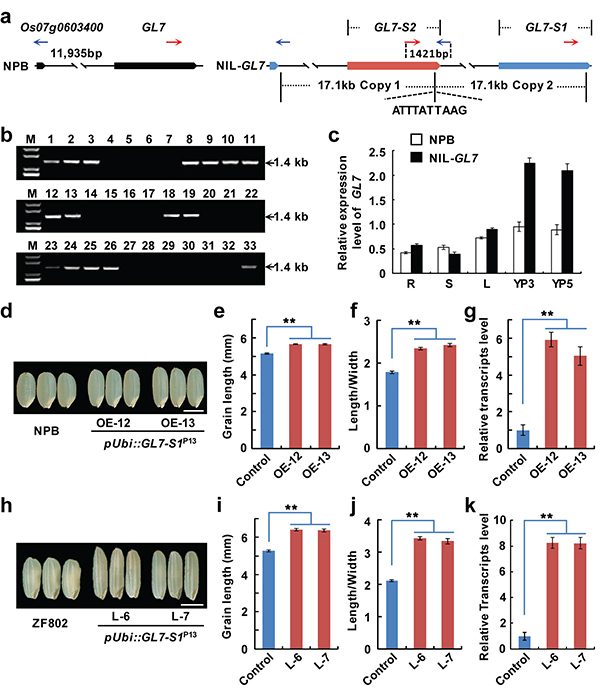






CNRRI Scientists Reveal the Genetic Mechanism of Rice Grain Length
July 13th, 2015
There are two major subspecies of Rice (Oryza sativa L.) in China: the short grain japonica variety, and the long-grain indica variety. With the opening of the rice market, customers nowadays are paying more attention to not only the rice flavor but the grain appearance also, which is a major quality parameter determined by grain size and endosperm translucency. Therefore, how to improve the grain appearance quality of rice and develop high-yield and good-quality varieties are of great practical significance to both breeders and seed companies.
Recently, the Innovation Team of Rice Germplasm Resources from China National Rice Research Institute (CNRRI) of Chinese Academy of Agricultural Sciences (CAAS) has made great progress in this field, with the cooperation of the Institute of Genetics and Developmental Biology, Chinese Academy of Sciences (CAS). They found that copy number variant (CNV) at the Grain Length on Chromosome 7 (GL7) locus contribute to grain size diversity in rice. The work suggests that pyramiding beneficial alleles of GL7 and other yield-and-quality-related genes may improve the breeding of elite rice varieties.

Introduction of the beneficial alleles of GL7 greatly improved the grain appearance quality
Compare to ordinary short grain varieties, the long grain American japonica rice has a slender and translucent appearance. Researchers cloned GL7 through a map-based cloning approach and finally narrowed the locus to an interval of 20.4 kb, which contains two candidate genes. GL7 encodes a protein homologous to Arabidopsis thaliana LONGIFOLIA proteins, which regulate longitudinal cell elongation. Further analysis found a 17.1-kb tandem duplication containing GL7 in long grain American japonica rice varieties. Tandem duplication of a 17.1-kb segment at the GL7 locus leads to upregulation of GL7 and downregulation of its nearby negative regulator, resulting in an increase of grain length and decrease of chalkiness, thus greatly improve grain appearance quality.

The phylogenetic analysis of 96 varieties based on GL7 locus and other grain size related genes
Sequence analysis indicates that allelic variations of GL7 and its negative regulator are associated with grain size diversity and that the CNV at the GL7 locus was selected for and used in breeding. For example, Yuefeng (YF), an indica sterile line widely used in southeast China has good appearance quality because of its pyramiding the beneficial allele of GL7 and GS3. The dominant nature of beneficial allele of GL7 and the fact that introduction of the GL7 alone could significantly improve grain quality without compromise of grain yield, suggested that GL7 is more valuable in breeding good-quality hybrid rice.

Elevated expression of GL7 increases grain length
The CNV at GL7 contributes to grain size diversity elaborated a different mechanism from those of other grain size QTLs. Genome-wide studies of CNVs in rice have indicated that there a number of CNVs arose during breeding. To explore the association between CNVs and the important agronomic traits and understand the underlying molecular mechanisms by advanced genomic approaches would shed a new light on crop domestication and contribute to crops improvement.
This work was supported by grants from the Ministry of Science and Technology of China (2013CBA01400) and the National Natural Science Foundation of China (31221004, 31201004 and 31201194). This work has been published on Nature Genetics on July 6th 2015 (DOI:10.1038/ng.3346). More details are available on the links bellow:
http://www.nature.com/ng/journal/vaop/ncurrent/full/ng.3346.html
CNRRI Today
Copyright © 2014- China National Rice Research Institute